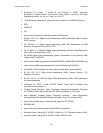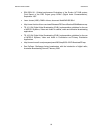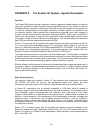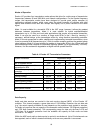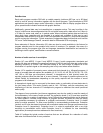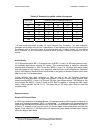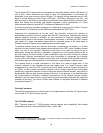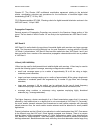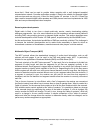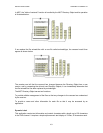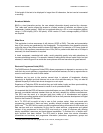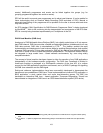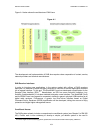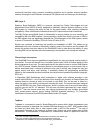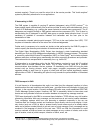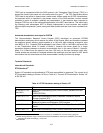
DIGITAL RADIO GUIDE APPENDIX A: EUREKA 147
100
show that L Band can be used to provide indoor reception with a well designed terrestrial
retransmission network. Canadian authorities consider L Band to be suitable for terrestrial digital
radio services and are using only L Band for their Eureka 147 services. In the US, S Band has
been used for terrestrial digital radio repeaters and GSM phones have been implemented at 1800
MHz and can provide adequate indoor reception.
Recent system developments
Digital radio is likely to turn from a simple audio-only service, merely simulcasting existing
analogue programmes, into a far more interactive and rich experience across several platforms
including DAB, using scrolling text and on demand digital services. This section describes some
technical developments of the Eureka 147 DAB system, as performed by the WorldDAB Forum.
As this section shows, the technical possibilities of DAB are practically unlimited. The challenge is
to harness the technical developments and to restrict them reasonably to those for which an
international consensus of broadcasters, manufactures and other players could be reached.
Multimedia Object Transport (MOT)
The MOT protocol allows the standardised transport of audio-visual information, such as still
pictures and web pages. It can be used in the PAD and packet mode. MOT is particularly
suitable for two applications: Broadcast Website (BWS) and Slide Show (SLS).
The basic principle of the MOT data carousels
19
is that each file to be broadcast is divided into
segments of equal length and then the segments for all files are repeated cyclically in the
broadcast stream. Each segment is tagged with an identifier to say which file it belongs to and a
segment number to identify which segment of the file it is. Segmenting the file in this way means
that the system will still work in an error-prone channel because, even for large files, the minimum
amount of data that must be received without error is just a segment rather than the whole file. If
a segment is received in error, the receiver can just wait for the next time that segment is
broadcast, and the file identifier and segment number allow the receiver to correctly reconstruct
each file.
This on its own, however, is not sufficient; with a "sea" of segments, the receiver can reconstruct
the files but cannot know either how to access them or how to manage them. What is needed is a
"table of contents" for the carousel that contains a list of all the files contained within the carousel.
With suitable version control applied to this "table of contents," it is possible to detect any change
to the carousel simply by examining the version of the table of contents. If a file is changed, the
version number for the file will change. This will, in turn, change the "table of contents," which will
result in a change in its own version number. A simple comparison of the "table of contents"
before and after the change allows the receiver to determine exactly what has changed, and to
perform any cache management as appropriate.
19
EN 301 234 V1.2.1 Digital Audio Broadcasting (DAB); Multimedia Object Transfer (MOT) protocol.



